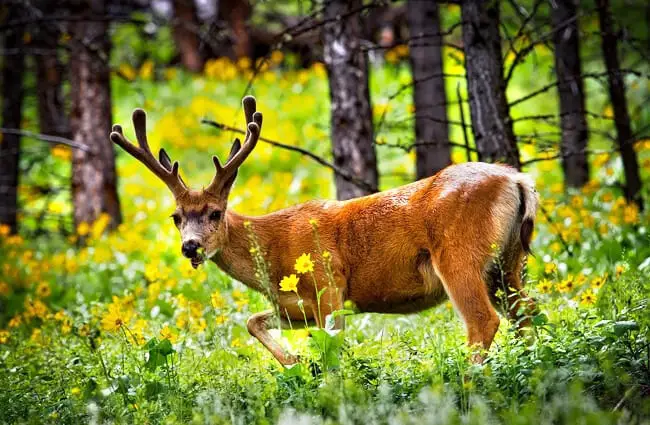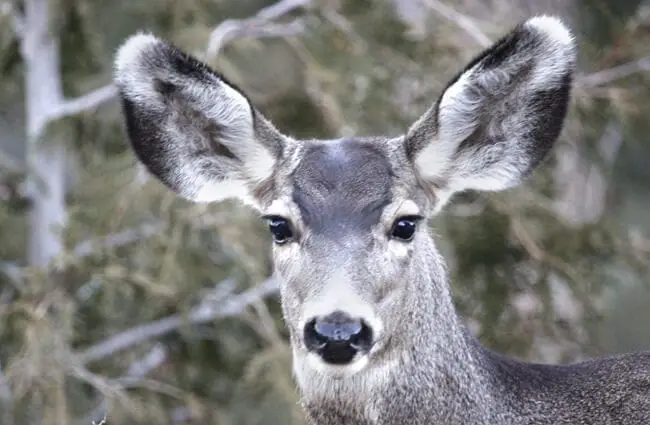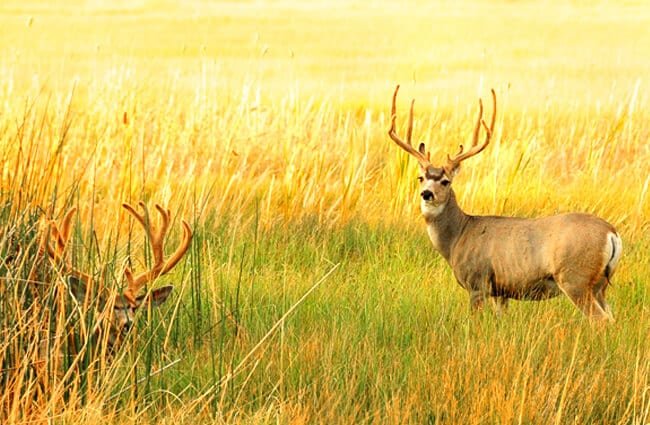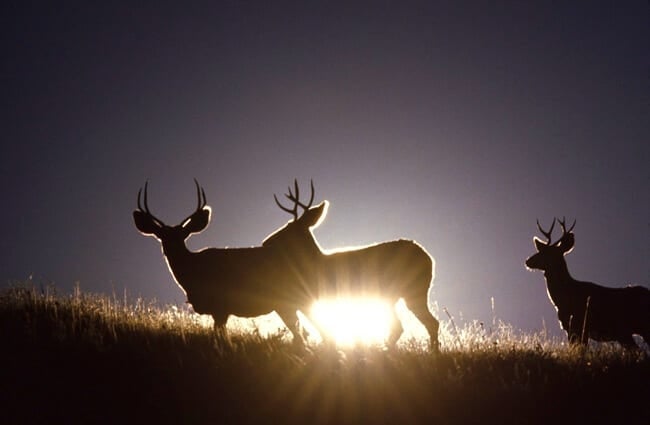The Majestic Mule Deer: A Comprehensive Guide
The American West wouldn’t feel complete without the sight of a mule deer gracefully navigating its diverse landscapes. These iconic creatures, known for their large ears – hence the name “mule” deer – are more than just beautiful animals. They are integral to the ecosystems they inhabit and possess a fascinating natural history. This guide delves into the world of mule deer, exploring their biology, behavior, habitat, and role in both the natural world and human culture.

Understanding Mule Deer Basics
What Does a Mule Deer Look Like?
Mule deer (Odocoileus hemionus) are readily distinguished from their white‑tailed deer cousins. They are generally larger, with a body length ranging from 5 to 7 feet and a weight between 100 and 300 pounds. Their most defining feature is, of course, their ears – considerably longer than those of white‑tailed deer. They have a robust build, a black‑tipped nose, and a distinctive white rump patch. Coat color varies seasonally, ranging from reddish‑brown in summer to grayish‑brown in winter. Males, or bucks, grow impressive antlers, which are shed and regrown annually. Antler size and complexity reflect the animal’s age, health, and genetics.
Where Do Mule Deer Live?
Mule deer are primarily found in western North America, from Canada to Mexico. They thrive in a variety of habitats, including forests, shrublands, grasslands, and even desert environments. They are particularly well adapted to mountainous regions, utilizing steep slopes and rugged terrain. Preferred habitats offer a mix of open foraging areas and dense cover for protection from predators. Specific subspecies have adapted to regional conditions, with some populations favoring higher elevations or more arid landscapes.
Delving into Mule Deer Biology
Diet and Foraging Habits
Mule deer are herbivores with a diverse diet. They browse on leaves, twigs, shrubs, and grasses. Their dietary preferences change with the seasons and available food sources. In spring and summer, they focus on succulent vegetation, while in winter they may rely more on woody browse. They are known as “selective browsers,” meaning they carefully choose the most nutritious parts of plants. They will also consume fruits, nuts, and agricultural crops when available. Their foraging behavior is often crepuscular, meaning they are most active at dawn and dusk.

Reproduction and Life Cycle
Mule deer have a distinct breeding season, typically occurring in the fall and early winter. Bucks engage in a period of intense competition, known as the rut, where they display their antlers and engage in sparring matches to establish dominance. They use vocalizations and scent marking to attract does (female deer). Gestation lasts about 6 to 7 months, with fawns typically born in late spring or early summer. Does usually give birth to one or two fawns, which are camouflaged with spotted coats. Fawns are precocial, meaning they can stand and walk shortly after birth, but they remain dependent on their mother for several months. Mule deer have an average lifespan of 8 to 10 years in the wild, though some individuals may live longer.
Evolutionary History
The evolutionary history of mule deer is rooted in the broader deer family, Cervidae. Fossil evidence suggests that deer originated in Eurasia during the Miocene epoch. Over millions of years, various deer species migrated to North America. The mule deer is believed to have diverged from other North American deer species during the Pleistocene epoch. Its adaptations, such as large ears and a more robust build, reflect its evolutionary response to the challenges of western landscapes. Genetic studies continue to refine our understanding of mule deer’s evolutionary relationships.
Mule Deer in the Ecosystem
Ecological Role
Mule deer play a vital role in maintaining the health of their ecosystems. As herbivores, they influence plant communities through browsing. Their foraging activities can promote plant diversity and create habitats for other species. They are also an important prey species for predators such as cougars, wolves, coyotes, and bears. This predator‑prey relationship helps regulate deer populations and maintain ecological balance. Their presence contributes to nutrient cycling through their waste and decomposition.

Interactions with Other Animals
Beyond predator‑prey relationships, mule deer interact with a variety of other animals. They often share habitat with elk, and competition for food resources can occur. They may also benefit from the foraging activities of elk, which can open up vegetation for deer. Smaller mammals, birds, and insects utilize deer trails and browsing areas. Deer can also be affected by parasites and diseases transmitted by other animals.
Mule Deer and Humans
Cultural Significance
Mule deer hold cultural significance for many Indigenous peoples of western North America. They are often depicted in art, stories, and ceremonies, and they are valued as a source of food, materials, and spiritual connection. For many western cultures, mule deer hunting is a long‑standing tradition and an important part of wildlife management. Their image is frequently used in art, logos, and branding.

Human Impact and Conservation
Mule deer populations have been impacted by human activities such as habitat loss, fragmentation, and hunting. Urban development, agriculture, and logging have reduced and altered deer habitat. Road construction can create barriers to movement and increase the risk of vehicle collisions. Climate change is also posing challenges, altering vegetation patterns and increasing the frequency of wildfires. Conservation efforts include habitat restoration, controlled burns, and regulated hunting seasons. Effective wildlife management is crucial to ensuring the long‑term survival of mule deer populations.
Encountering Mule Deer in the Wild & Captive Care
What to Do If You Encounter a Mule Deer
If you encounter a mule deer in the wild, observe it from a respectful distance. Avoid approaching or attempting to feed it. Keep pets leashed and under control. If a deer appears sick or injured, contact your local wildlife agency. Remember, they are wild animals and should be treated with caution and respect.
Captive Care Considerations
Caring for mule deer in captivity requires careful attention to their physical and behavioral needs. Provide a spacious enclosure with a variety of terrain features, including both open areas and sheltered spaces. Offer a diverse diet of high‑quality forage, browse, and supplemental feed. Provide access to clean water at all times. Regular veterinary care is essential, including vaccinations and parasite control. Enrichment activities, such as browse piles, rubbing posts, and scent marking opportunities, are crucial for promoting natural behaviors. Avoid overcrowding and minimize human contact to reduce stress.

Fascinating Mule Deer Facts
- Mule deer are excellent jumpers, capable of clearing fences up to 8 feet high.
- They use a unique foot‑pounding behavior, called “stamping,” to alert other deer to danger.
- Mule deer have a complex social structure, with seasonal aggregations and individual home ranges.
- Their antlers are covered in velvet during the growing season, which is shed before the rut.
- Fawns are born without spots, and the spots develop over the first few weeks of life.
- Mule deer can travel long distances in search of food and water.

The mule deer is a symbol of the American West – resilient, adaptable, and captivating. Understanding their biology, behavior, and ecological role is crucial for ensuring their continued survival in a changing world. By appreciating these magnificent creatures and supporting conservation efforts, we can help ensure that future generations can continue to marvel at the sight of mule deer gracefully navigating their wild landscapes.

![Red Angus Closeup of a beautiful Red Angus cowPhoto by: U.S. Department of Agriculture [pubic domain]https://creativecommons.org/licenses/by/2.0/](https://animals.net/wp-content/uploads/2020/03/Red-Angus-4-238x178.jpg)




![Red Angus Closeup of a beautiful Red Angus cowPhoto by: U.S. Department of Agriculture [pubic domain]https://creativecommons.org/licenses/by/2.0/](https://animals.net/wp-content/uploads/2020/03/Red-Angus-4-100x75.jpg)

